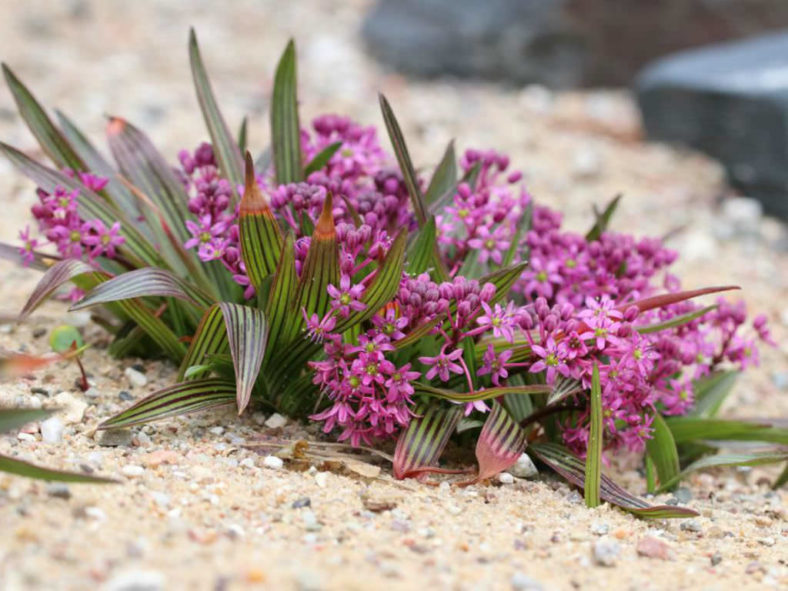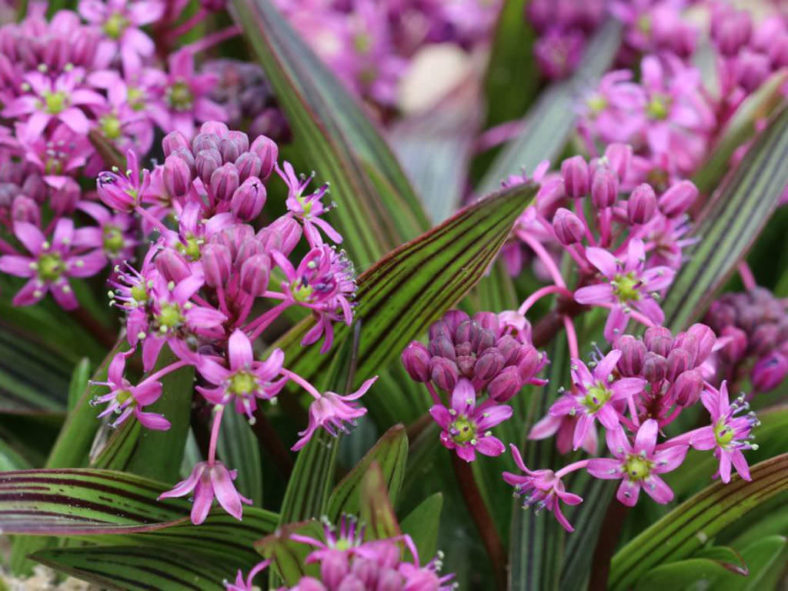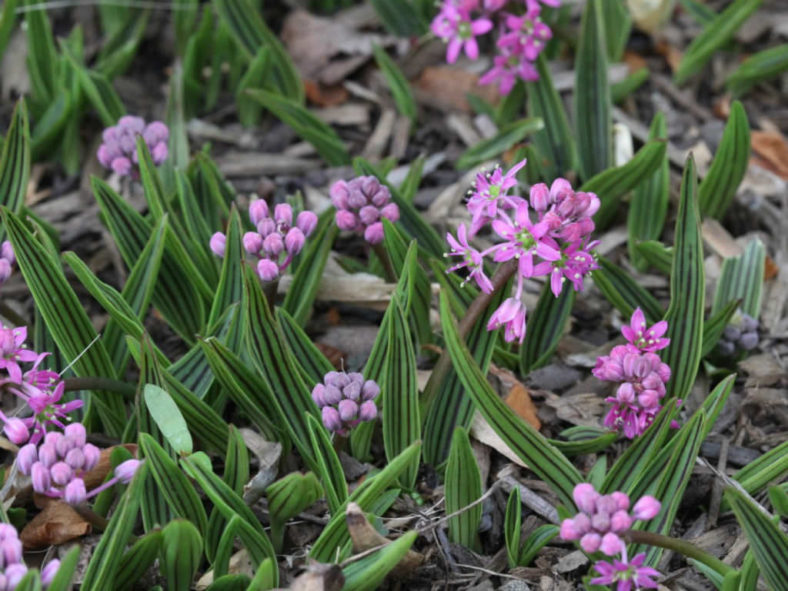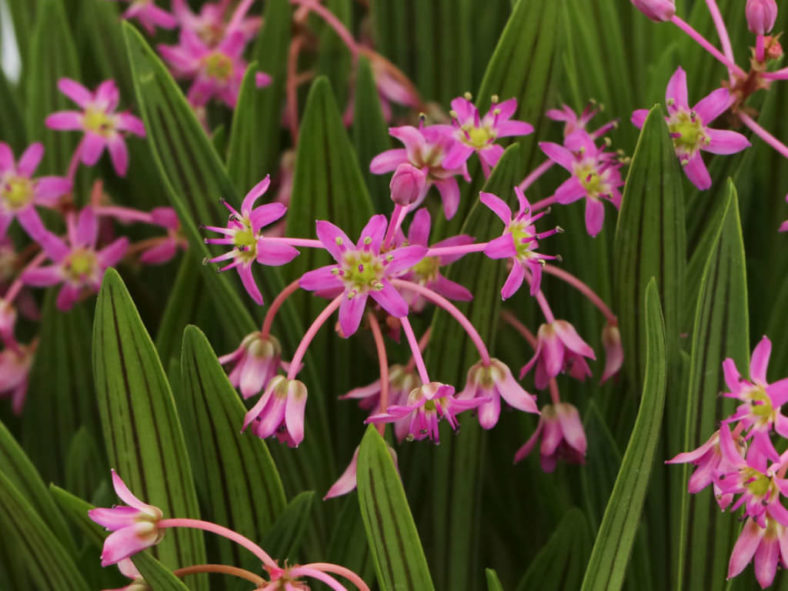Scientific Name
Ledebouria cooperi (Hook.f.) Jessop
Common Name(s)
Cooper's African Hyacinth, Cooper's False Scilla, Cooper's Ledebouria, Striped False Squill, Striped Squill, Zebra's Quill
Synonym(s)
Scilla cooperi
Scientific Classification
Family: Asparagaceae
Subfamily: Scilloideae
Tribe: Hyacintheae
Subtribe: Massoniinae
Genus: Ledebouria
Origin
Ledebouria cooperi is native to South Africa.
Description
Ledebouria cooperi is an attractive bulbous plant with narrow, olive-green leaves marked with purple spots, stripes, a combination of both, or often completely unmarked. The leaves can grow up to 10 inches (25 cm) long.
The bright pink, star-shaped flowers appear clustered along the main flower stalk in spring or early summer.

Hardiness
USDA hardiness zones 9a to 10b: from 20 °F (−6.7 °C) to 40 °F (+4.4 °C).
How to Grow and Care
Silver Squill is often cultivated as a houseplant and grows well with minimal care. However, it requires bright light and 3 to 4 hours of direct sunlight a day.
During the active growth period, interior temperatures are fine for Silver Squill grown as houseplants. Outdoor plants can withstand winter temperatures below 30°F (-1°C). Try growing Silver Squill outdoors during spring and summer when ambient temperatures are at least 60°F (15°C). In cold regions, move the plant back indoors.
Use a soil-based potting mixture and plant Silver Squill bulbs in pans or half-pots. Pot up the bulbs in the spring, but no more than three in a single pot with a diameter of 4 to 6 inches (10 to 15 cm). Space the bulbs evenly over the surface and bury only the bottom half of each bulb in the potting mixture. During the first 4 or 6 weeks, do not feed the plants and water sparingly, allowing the top half of the potting mix to dry out between waterings. When the new roots are well established, treat the plants as you would normally. Break up overcrowded clumps every 2 or 3 years.
Learn more at How to Grow and Care for a Silver Squill.
Links
- Back to genus Ledebouria
- Succupedia: Browse succulents by Scientific Name, Common Name, Genus, Family, USDA Hardiness Zone, Origin, or cacti by Genus
Photo Gallery
Click on a photo to see a larger version.


